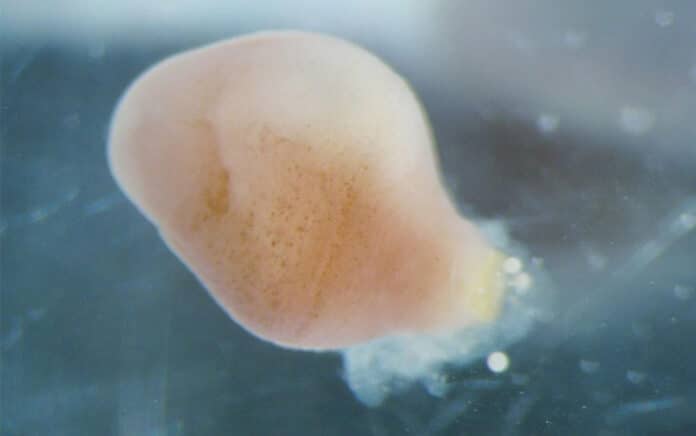There live strange worm-like creatures deep on the ocean floor. These creatures, Xenoturbella, possess a very simple body plan. They have mouths but no eyes, brains, stomachs, or anuses. They also have bilateral symmetry, meaning the right and left sides are more or less symmetrical. This body plan has led to confusion about where exactly these creatures fit in the tree of life.
Now, in a recently published study, researchers from Japan have observed an exciting mode of reproduction, which could shed light on the life history of these species. Scientists from the University of Tsukuba reported that Xenoturbella bocki releases gametes (reproductive cells) through ruptures in its body wall.
Lead author of the study, Associate Professor Hiroaki Nakan, said, “The phylogenetic position (evolutionary history) of these species is still unclear. Because the development of a species can often provide clues to how that species evolved, we wanted to investigate the reproduction and development of these species in the lab.”
Keeping the adult Xenoturbella alive in a laboratory setting was a big challenge for scientists during the study.
The researchers were able to keep adult worms alive because Xenoturbella bocki is slightly more robust because it lives in shallower waters than the other species in this genus. Adult Xenoturbella were procured from the Swedish Gullmarsfjord, and once inside the lab, they were made to reproduce once every month. Our studies not only demonstrated that this species breeds during the winter but also unveiled an intriguing way of reproduction.
Associate Professor Nakano said, “When the animals spawned, we noticed that the eggs and sperm were released from new openings in the body wall. These openings appeared to rupture in the body that only appeared for spawning. Based on our observations, we think that gametes likely begin to mature on the surface of the gut, are released into the body cavity when mature, and are then released into the water through these ruptures.”
The phylogeny of these peculiar marine worms will ultimately be made clearer by an understanding of the reproductive features of Xenoturbella. The basis for investigating larval development and, perhaps, providing more answers to this evolutionary puzzle comes from successful laboratory reproduction.
Journal Reference:
- Nakano, H., Nakano, A., Maeno, A. et al. Induced spawning with gamete release from body ruptures during reproduction of Xenoturbella bocki. Commun Biol 6, 172 (2023). DOI: 10.1038/s42003-023-04549-z
